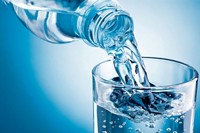Advertisement
Grab your lab coat. Let's get started
Welcome!
Welcome!
Create an account below to get 6 C&EN articles per month, receive newsletters and more - all free.
It seems this is your first time logging in online. Please enter the following information to continue.
As an ACS member you automatically get access to this site. All we need is few more details to create your reading experience.
Not you? Sign in with a different account.
Not you? Sign in with a different account.
ERROR 1
ERROR 1
ERROR 2
ERROR 2
ERROR 2
ERROR 2
ERROR 2
Password and Confirm password must match.
If you have an ACS member number, please enter it here so we can link this account to your membership. (optional)
ERROR 2
ACS values your privacy. By submitting your information, you are gaining access to C&EN and subscribing to our weekly newsletter. We use the information you provide to make your reading experience better, and we will never sell your data to third party members.
Environment
On ‘Eating Arsenic’
July 1, 2013
| A version of this story appeared in
Volume 91, Issue 26
Thanks for a May 6 issue so chock-full of interesting and useful articles. I’d like to comment on “Eating Arsenic” (page 36). My small community in California was forced by the state to install two arsenic-removal systems a few years ago, at a cost of about $20 million, because a couple of our wells were a little over the arsenic maximum allowed by law.
This is what I recall on the standard-setting process: President Bill Clinton’s National Academy of Sciences’ committee looked at data from around the world on cancer incidence versus arsenic levels in the water and found that only two data sets had any significance—one from Taiwan and one from Bangladesh. The committee drew a line through those two data points and extrapolated to zero. Then they picked an arsenic level “standard” that corresponded to about the same incidence of skin cancer caused by exposure to the sun.
I wonder what standard we would choose after correcting those data for cancers caused by eating arsenic-laced rice in Taiwan and Bangladesh. I understand that arsenic gets into the rice from the water, but surely people in those countries eat more rice per capita than people in our little town. But maybe we drink more water?
Geoffrey Lindsay
Ridgecrest, Calif.



Join the conversation
Contact the reporter
Submit a Letter to the Editor for publication
Engage with us on Twitter